Yang Lu
Agentic Graph Neural Networks for Wireless Communications and Networking Towards Edge General Intelligence: A Survey
Aug 12, 2025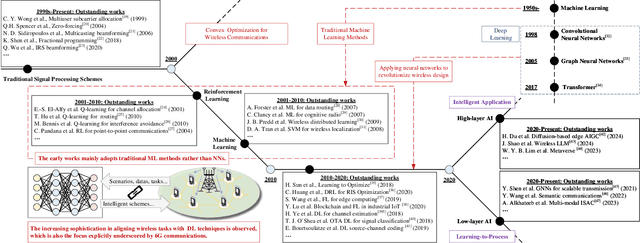
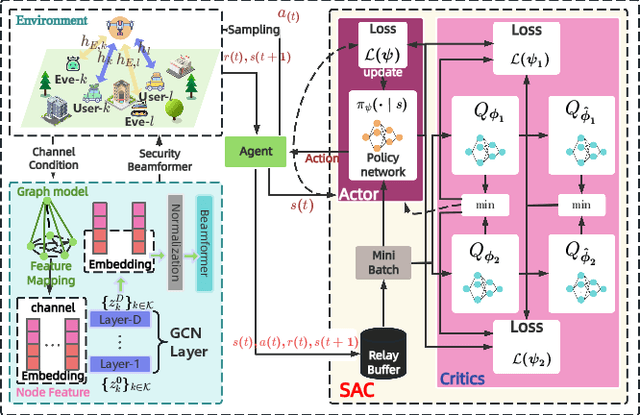
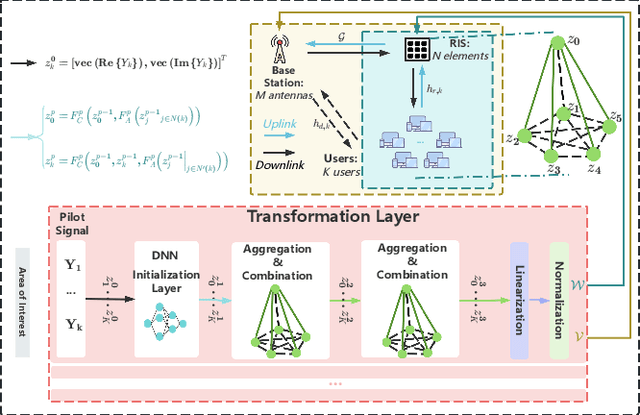
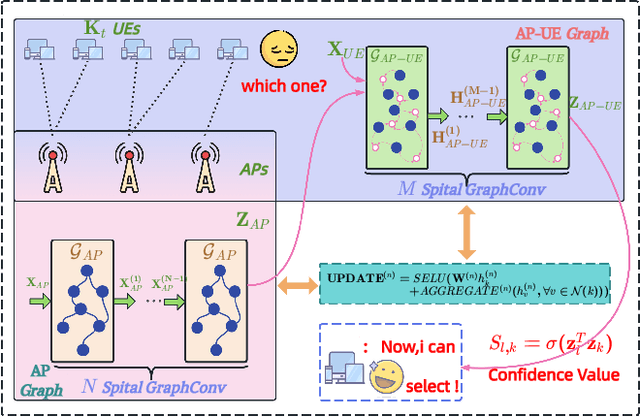
Abstract:The rapid advancement of communication technologies has driven the evolution of communication networks towards both high-dimensional resource utilization and multifunctional integration. This evolving complexity poses significant challenges in designing communication networks to satisfy the growing quality-of-service and time sensitivity of mobile applications in dynamic environments. Graph neural networks (GNNs) have emerged as fundamental deep learning (DL) models for complex communication networks. GNNs not only augment the extraction of features over network topologies but also enhance scalability and facilitate distributed computation. However, most existing GNNs follow a traditional passive learning framework, which may fail to meet the needs of increasingly diverse wireless systems. This survey proposes the employment of agentic artificial intelligence (AI) to organize and integrate GNNs, enabling scenario- and task-aware implementation towards edge general intelligence. To comprehend the full capability of GNNs, we holistically review recent applications of GNNs in wireless communications and networking. Specifically, we focus on the alignment between graph representations and network topologies, and between neural architectures and wireless tasks. We first provide an overview of GNNs based on prominent neural architectures, followed by the concept of agentic GNNs. Then, we summarize and compare GNN applications for conventional systems and emerging technologies, including physical, MAC, and network layer designs, integrated sensing and communication (ISAC), reconfigurable intelligent surface (RIS) and cell-free network architecture. We further propose a large language model (LLM) framework as an intelligent question-answering agent, leveraging this survey as a local knowledge base to enable GNN-related responses tailored to wireless communication research.
Anyone Can Jailbreak: Prompt-Based Attacks on LLMs and T2Is
Jul 29, 2025Abstract:Despite significant advancements in alignment and content moderation, large language models (LLMs) and text-to-image (T2I) systems remain vulnerable to prompt-based attacks known as jailbreaks. Unlike traditional adversarial examples requiring expert knowledge, many of today's jailbreaks are low-effort, high-impact crafted by everyday users with nothing more than cleverly worded prompts. This paper presents a systems-style investigation into how non-experts reliably circumvent safety mechanisms through techniques such as multi-turn narrative escalation, lexical camouflage, implication chaining, fictional impersonation, and subtle semantic edits. We propose a unified taxonomy of prompt-level jailbreak strategies spanning both text-output and T2I models, grounded in empirical case studies across popular APIs. Our analysis reveals that every stage of the moderation pipeline, from input filtering to output validation, can be bypassed with accessible strategies. We conclude by highlighting the urgent need for context-aware defenses that reflect the ease with which these jailbreaks can be reproduced in real-world settings.
CXR-LT 2024: A MICCAI challenge on long-tailed, multi-label, and zero-shot disease classification from chest X-ray
Jun 09, 2025Abstract:The CXR-LT series is a community-driven initiative designed to enhance lung disease classification using chest X-rays (CXR). It tackles challenges in open long-tailed lung disease classification and enhances the measurability of state-of-the-art techniques. The first event, CXR-LT 2023, aimed to achieve these goals by providing high-quality benchmark CXR data for model development and conducting comprehensive evaluations to identify ongoing issues impacting lung disease classification performance. Building on the success of CXR-LT 2023, the CXR-LT 2024 expands the dataset to 377,110 chest X-rays (CXRs) and 45 disease labels, including 19 new rare disease findings. It also introduces a new focus on zero-shot learning to address limitations identified in the previous event. Specifically, CXR-LT 2024 features three tasks: (i) long-tailed classification on a large, noisy test set, (ii) long-tailed classification on a manually annotated "gold standard" subset, and (iii) zero-shot generalization to five previously unseen disease findings. This paper provides an overview of CXR-LT 2024, detailing the data curation process and consolidating state-of-the-art solutions, including the use of multimodal models for rare disease detection, advanced generative approaches to handle noisy labels, and zero-shot learning strategies for unseen diseases. Additionally, the expanded dataset enhances disease coverage to better represent real-world clinical settings, offering a valuable resource for future research. By synthesizing the insights and innovations of participating teams, we aim to advance the development of clinically realistic and generalizable diagnostic models for chest radiography.
Multi-Waveguide Pinching Antennas for ISAC
May 30, 2025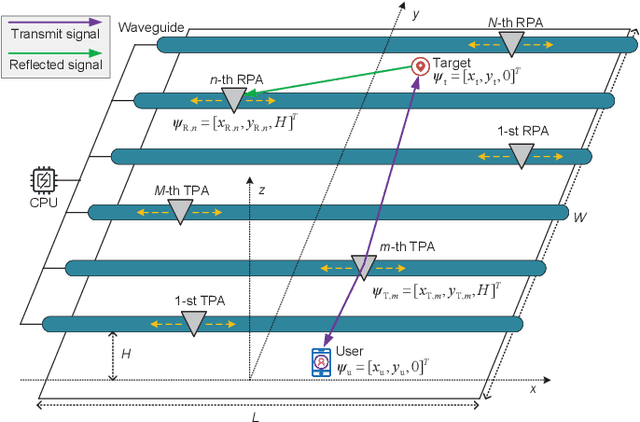
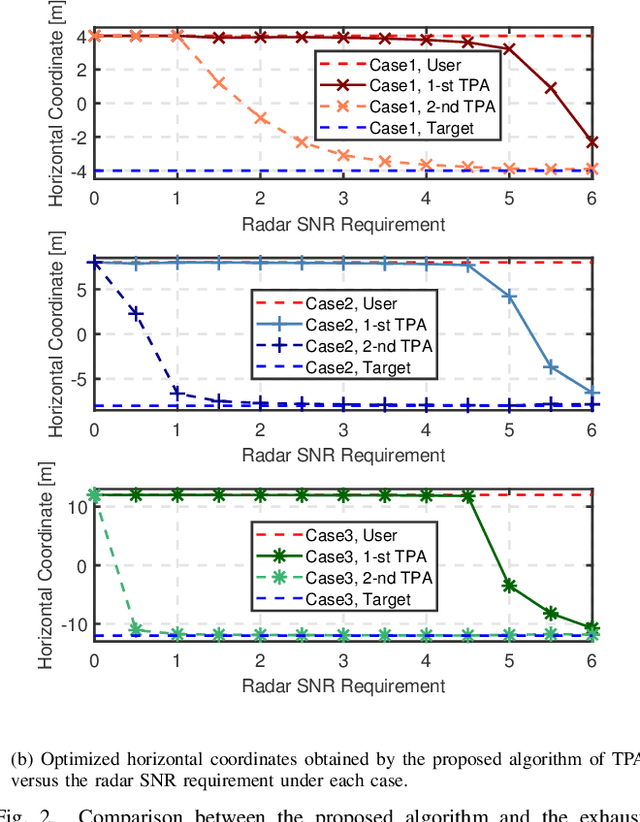
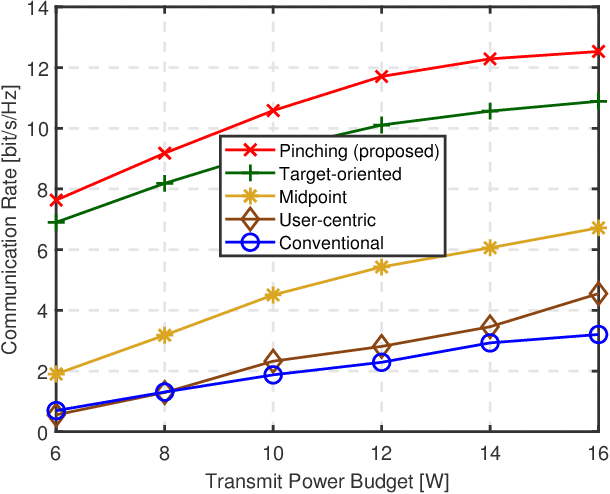
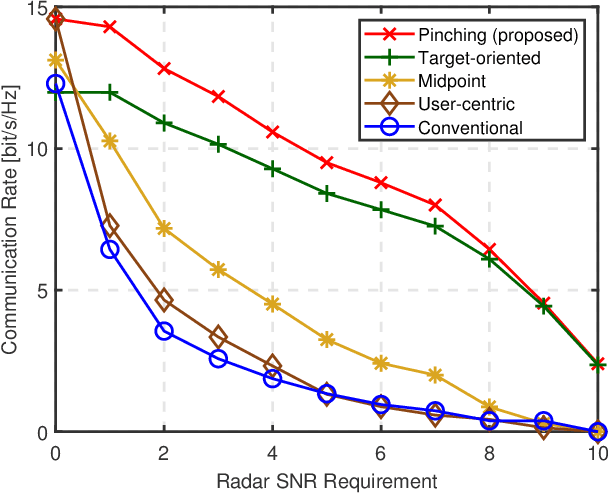
Abstract:Recently, a novel flexible-antenna technology, called pinching antennas, has attracted growing academic interest. By inserting discrete dielectric materials, pinching antennas can be activated at arbitrary points along waveguides, allowing for flexible customization of large-scale path loss. This paper investigates a multi-waveguide pinching-antenna integrated sensing and communications (ISAC) system, where transmit pinching antennas (TPAs) and receive pinching antennas (RPAs) coordinate to simultaneously detect one potential target and serve one downlink user. We formulate a communication rate maximization problem subject to radar signal-to-noise ratio (SNR) requirement, transmit power budget, and the allowable movement region of the TPAs, by jointly optimizing TPA locations and transmit beamforming design. To address the non-convexity of the problem, we propose a novel fine-tuning approximation method to reformulate it into a tractable form, followed by a successive convex approximation (SCA)-based algorithm to obtain the solution efficiently. Extensive simulations validate both the system design and the proposed algorithm. Results show that the proposed method achieves near-optimal performance compared with the computational-intensive exhaustive search-based benchmark, and pinching-antenna ISAC systems exhibit a distinct communication-sensing trade-off compared with conventional systems.
Progressive Data Dropout: An Embarrassingly Simple Approach to Faster Training
May 28, 2025Abstract:The success of the machine learning field has reliably depended on training on large datasets. While effective, this trend comes at an extraordinary cost. This is due to two deeply intertwined factors: the size of models and the size of datasets. While promising research efforts focus on reducing the size of models, the other half of the equation remains fairly mysterious. Indeed, it is surprising that the standard approach to training remains to iterate over and over, uniformly sampling the training dataset. In this paper we explore a series of alternative training paradigms that leverage insights from hard-data-mining and dropout, simple enough to implement and use that can become the new training standard. The proposed Progressive Data Dropout reduces the number of effective epochs to as little as 12.4% of the baseline. This savings actually do not come at any cost for accuracy. Surprisingly, the proposed method improves accuracy by up to 4.82%. Our approach requires no changes to model architecture or optimizer, and can be applied across standard training pipelines, thus posing an excellent opportunity for wide adoption. Code can be found here: https://github.com/bazyagami/LearningWithRevision
A simple estimator of the correlation kernel matrix of a determinantal point process
May 20, 2025Abstract:The Determinantal Point Process (DPP) is a parameterized model for multivariate binary variables, characterized by a correlation kernel matrix. This paper proposes a closed form estimator of this kernel, which is particularly easy to implement and can also be used as a starting value of learning algorithms for maximum likelihood estimation. We prove the consistency and asymptotic normality of our estimator, as well as its large deviation properties.
Versatile Distributed Maneuvering with Generalized Formations using Guiding Vector Fields
May 09, 2025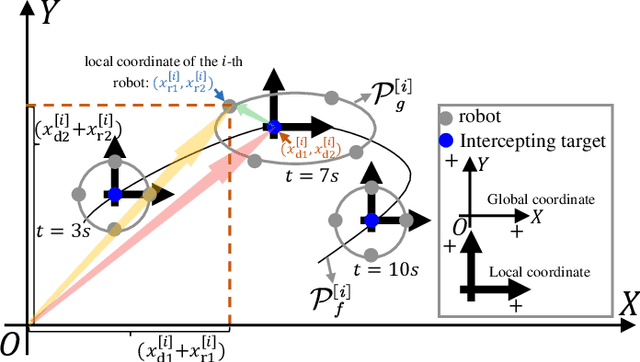
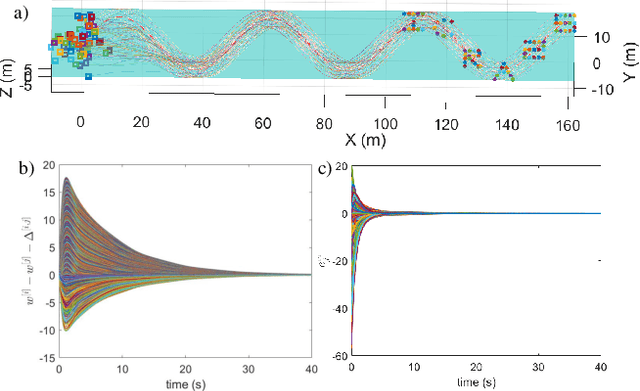
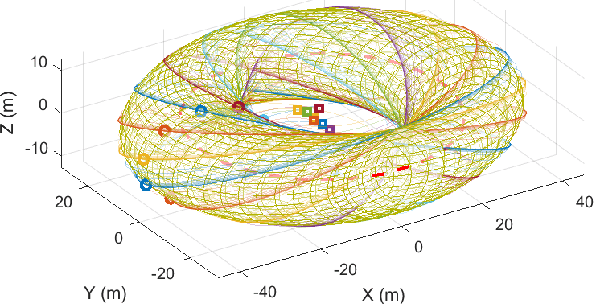
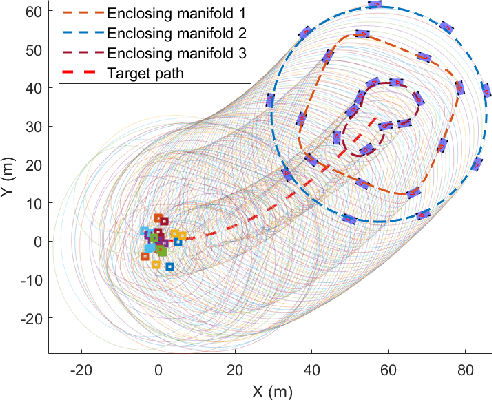
Abstract:This paper presents a unified approach to realize versatile distributed maneuvering with generalized formations. Specifically, we decompose the robots' maneuvers into two independent components, i.e., interception and enclosing, which are parameterized by two independent virtual coordinates. Treating these two virtual coordinates as dimensions of an abstract manifold, we derive the corresponding singularity-free guiding vector field (GVF), which, along with a distributed coordination mechanism based on the consensus theory, guides robots to achieve various motions (i.e., versatile maneuvering), including (a) formation tracking, (b) target enclosing, and (c) circumnavigation. Additional motion parameters can generate more complex cooperative robot motions. Based on GVFs, we design a controller for a nonholonomic robot model. Besides the theoretical results, extensive simulations and experiments are performed to validate the effectiveness of the approach.
FATE: A Prompt-Tuning-Based Semi-Supervised Learning Framework for Extremely Limited Labeled Data
Apr 14, 2025Abstract:Semi-supervised learning (SSL) has achieved significant progress by leveraging both labeled data and unlabeled data. Existing SSL methods overlook a common real-world scenario when labeled data is extremely scarce, potentially as limited as a single labeled sample in the dataset. General SSL approaches struggle to train effectively from scratch under such constraints, while methods utilizing pre-trained models often fail to find an optimal balance between leveraging limited labeled data and abundant unlabeled data. To address this challenge, we propose Firstly Adapt, Then catEgorize (FATE), a novel SSL framework tailored for scenarios with extremely limited labeled data. At its core, the two-stage prompt tuning paradigm FATE exploits unlabeled data to compensate for scarce supervision signals, then transfers to downstream tasks. Concretely, FATE first adapts a pre-trained model to the feature distribution of downstream data using volumes of unlabeled samples in an unsupervised manner. It then applies an SSL method specifically designed for pre-trained models to complete the final classification task. FATE is designed to be compatible with both vision and vision-language pre-trained models. Extensive experiments demonstrate that FATE effectively mitigates challenges arising from the scarcity of labeled samples in SSL, achieving an average performance improvement of 33.74% across seven benchmarks compared to state-of-the-art SSL methods. Code is available at https://anonymous.4open.science/r/Semi-supervised-learning-BA72.
Synthesizing Public Opinions with LLMs: Role Creation, Impacts, and the Future to eDemorcacy
Mar 31, 2025Abstract:This paper investigates the use of Large Language Models (LLMs) to synthesize public opinion data, addressing challenges in traditional survey methods like declining response rates and non-response bias. We introduce a novel technique: role creation based on knowledge injection, a form of in-context learning that leverages RAG and specified personality profiles from the HEXACO model and demographic information, and uses that for dynamically generated prompts. This method allows LLMs to simulate diverse opinions more accurately than existing prompt engineering approaches. We compare our results with pre-trained models with standard few-shot prompts. Experiments using questions from the Cooperative Election Study (CES) demonstrate that our role-creation approach significantly improves the alignment of LLM-generated opinions with real-world human survey responses, increasing answer adherence. In addition, we discuss challenges, limitations and future research directions.
PathOrchestra: A Comprehensive Foundation Model for Computational Pathology with Over 100 Diverse Clinical-Grade Tasks
Mar 31, 2025Abstract:The complexity and variability inherent in high-resolution pathological images present significant challenges in computational pathology. While pathology foundation models leveraging AI have catalyzed transformative advancements, their development demands large-scale datasets, considerable storage capacity, and substantial computational resources. Furthermore, ensuring their clinical applicability and generalizability requires rigorous validation across a broad spectrum of clinical tasks. Here, we present PathOrchestra, a versatile pathology foundation model trained via self-supervised learning on a dataset comprising 300K pathological slides from 20 tissue and organ types across multiple centers. The model was rigorously evaluated on 112 clinical tasks using a combination of 61 private and 51 public datasets. These tasks encompass digital slide preprocessing, pan-cancer classification, lesion identification, multi-cancer subtype classification, biomarker assessment, gene expression prediction, and the generation of structured reports. PathOrchestra demonstrated exceptional performance across 27,755 WSIs and 9,415,729 ROIs, achieving over 0.950 accuracy in 47 tasks, including pan-cancer classification across various organs, lymphoma subtype diagnosis, and bladder cancer screening. Notably, it is the first model to generate structured reports for high-incidence colorectal cancer and diagnostically complex lymphoma-areas that are infrequently addressed by foundational models but hold immense clinical potential. Overall, PathOrchestra exemplifies the feasibility and efficacy of a large-scale, self-supervised pathology foundation model, validated across a broad range of clinical-grade tasks. Its high accuracy and reduced reliance on extensive data annotation underline its potential for clinical integration, offering a pathway toward more efficient and high-quality medical services.
 Add to Chrome
Add to Chrome Add to Firefox
Add to Firefox Add to Edge
Add to Edge